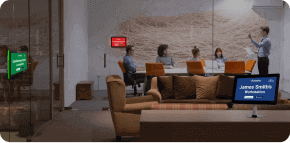Blog

Workspace Management Software: Enhance workplace safety and productivity
Workplaces are typically safe environments where employees are at their most productive. However, it might surprise you to learn that there’s always room to enhance both aspects of working life – safety at the office, and efficiency of the workforce. And choosing a full-featured workspace management software solution is the best way to achieve both objectives.
Why workspace management matters?
Recent changes to how we work, largely brought about by the COVID-19 crisis, underlines the importance of flexible workplaces. More specifically, that flexibility comes from:
- Empowering remote work through better communication
- Adding flexible work options
- Intelligent workspace planning and workstation assignment
- Facilitating hoteling and workspace sharing
- Better on-premises desk, cubicle and workstation scheduling
- Enabling better workplace social distancing
These measures give employees and employers more time to focus on the organizations’ mission-critical tasks, which leads to productivity enhancements. The primary reason for such gains is that the team (both workers and management) spend less time worrying about workspace organization and administration, especially in organizations where flexible work is the norm.
When implemented individually, or selectively, the tactics highlighted above can be very effective on their own. However, as more organizations embrace work-from-home policies, and pivot towards hoteling and flexi workspace arrangements, using high-powered office allocation space software can supercharge those productivity gains by several multiples.
Bringing efficiency to workspace management
One of the first ways that businesses might tap into workspace management efficiencies is through strategic desk, cubicle and room assignment. And, what better way to do that than to use 3D-floor maps of your entire office, and plan who sits where and, importantly for social distancing, which cubicles or desks will be de-allocated, and which ones to schedule for cleaning or disinfection protocols.















































 Support
Support  Demo
Demo  Blog
Blog